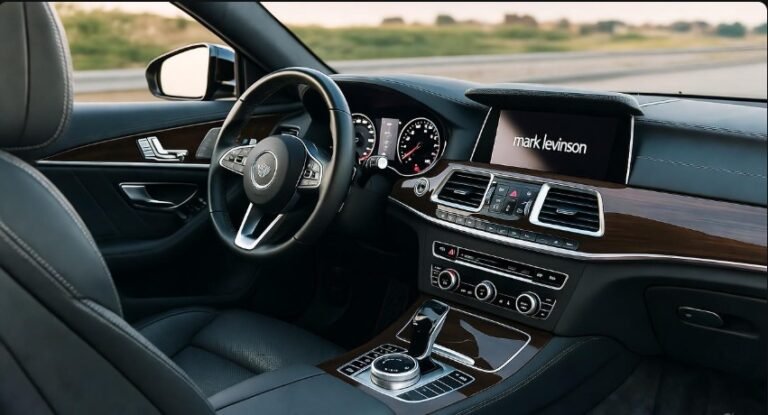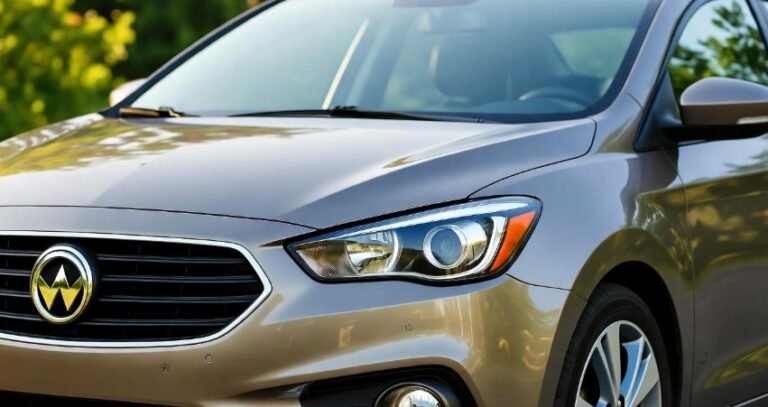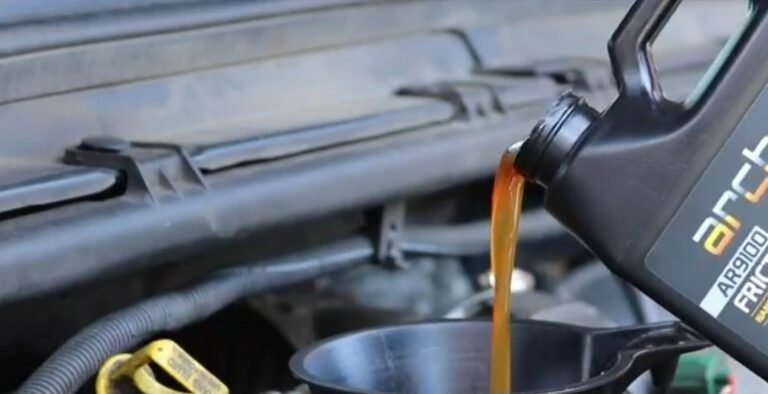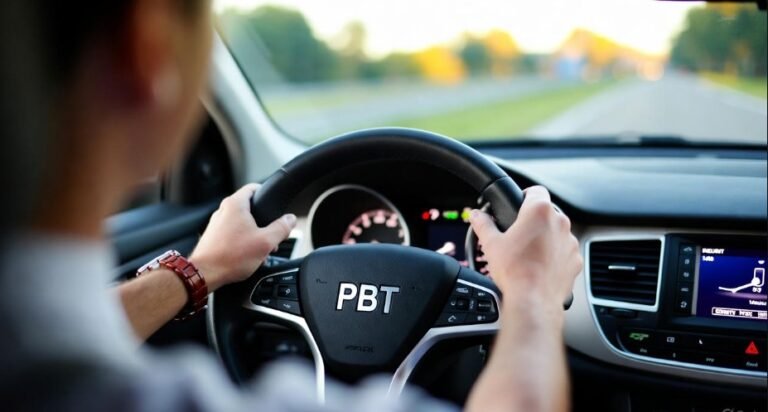35 Percent Window Tint Meaning With Real Life Examples
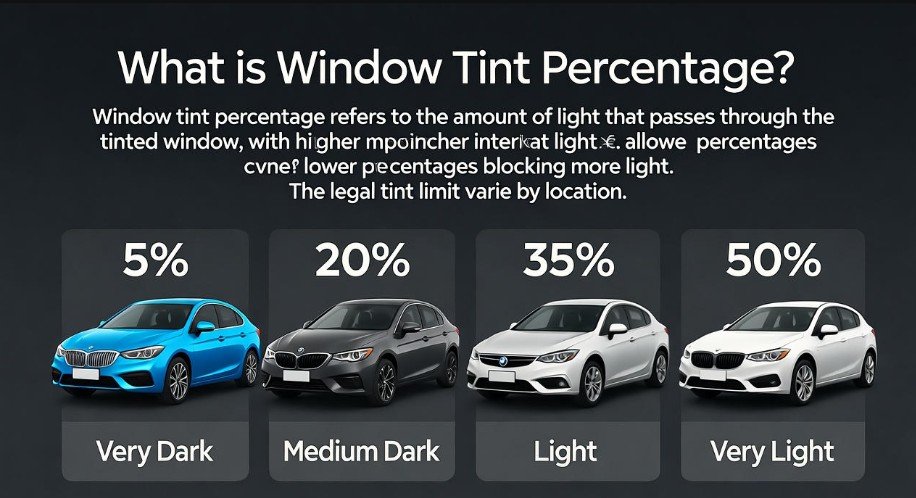
If you’ve ever wondered what 35 percent window tint really means for your car, you’re not alone. Many vehicle owners debate how dark they should go, balancing privacy, style, heat reduction, and legal compliance. Understanding the percentage of a tint isn’t just about aesthetics; it’s about safety, comfort, and following the law. In this article, we’ll break down the meaning of 35% tint, how it looks in real life, its benefits, differences compared to other shades, and examples to help you make an informed choice.
What Does 35 Percent Window Tint Actually Mean?
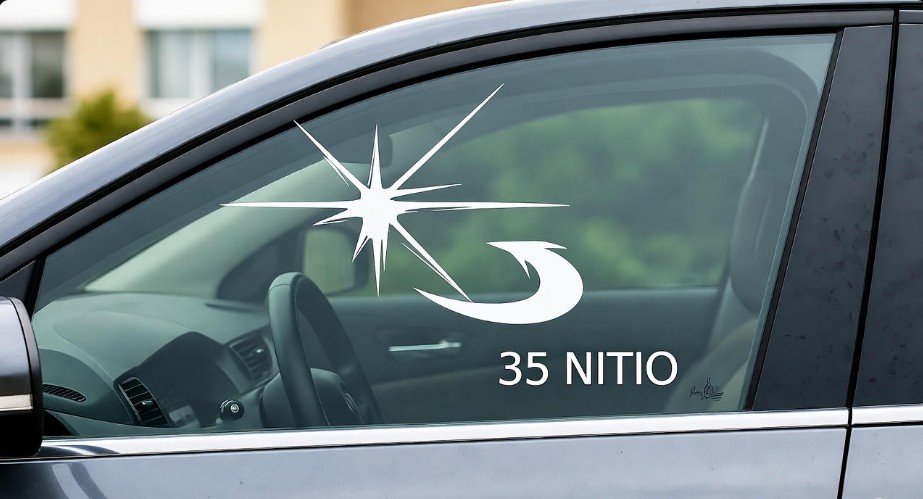
When you hear 35% window tint, it refers to the Visible Light Transmission (VLT)—how much light passes through your car windows. In this case, 35% of light passes through the glass, while 65% is blocked. This makes the tint moderately dark, providing a balance between privacy and visibility. Unlike darker tints, like 5% or 20%, 35% tint still allows a significant amount of natural light to enter, making it easier to see both inside and outside the vehicle.
Think of it like wearing sunglasses on a bright day—not so dark that you stumble around, but dark enough to feel comfortable and reduce glare. In many states, this percentage is legally permitted for front side windows, making it one of the most popular choices among drivers who want style without breaking the law.
States Where 35% Tint is Legal
Legal regulations for window tint vary significantly across the U.S. Fortunately, 35% tint is widely accepted in a majority of states. Some of these include:
-
Michigan, Connecticut, Hawaii
-
Idaho, Illinois, Kansas
-
Maine, Maryland, Massachusetts
-
Missouri, Nebraska, Nevada
-
New Hampshire, North Carolina, Oregon
-
South Dakota, Tennessee, West Virginia
-
Kentucky, Indiana, Arkansas
-
Colorado, New Mexico, Washington
-
Wyoming, South Carolina, Montana, Oklahoma, Mississippi, Texas
While most states allow 35% tint on side and rear windows, it’s crucial to double-check local laws. Laws can change, and sometimes front windshield rules are stricter.
Pro Tip: Even if it’s legal, always consider visibility and safety. You want to ensure night driving remains safe.
Visualizing 35% Tint: Real-Life Appearance
So, what does 35% tint look like in real life? Picture this: your car windows are noticeably darker than clear glass but not so dark that it looks like a blacked-out limousine. During the day, the tint reduces glare and softens harsh sunlight, but you can still clearly see inside the car from the outside. At night, visibility remains comfortable for both drivers and pedestrians, making it practical as well as stylish.
-
Appearance: Medium shade, subtle yet noticeable.
-
Glare reduction: Moderate, perfect for sunny climates.
-
Privacy: Offers privacy during the day but less at night.
-
UV protection: Reduces exposure, though not as much as darker films.
Some films even have slightly reflective surfaces, giving a sleek look. Others are completely matte and blend naturally with the window glass. The exact appearance depends on the type of film, window color, and installation quality.
Benefits of Choosing 35% Window Tint
Opting for 35% tint comes with multiple advantages:
-
Glare Reduction: Sunglasses for your car. It cuts down sunlight reflections on dashboards, screens, and mirrors.
-
Heat Reduction: Blocks a fair amount of solar heat, keeping your car cooler in the summer.
-
UV Protection: Reduces exposure to harmful ultraviolet rays, protecting skin and interior materials.
-
Moderate Privacy: Offers a sense of privacy without making the interior pitch black.
-
Stylish Appearance: Gives your car a sleek, polished look without being overly dark.
In real-life scenarios, drivers often report feeling more comfortable in bright sunlight with 35% tint, especially during long drives. You won’t feel like you’re driving in a cave, but you also won’t be squinting constantly.
Comparing 35% Tint With Other Shades
When choosing a tint, understanding how 35% compares to other percentages is key:
| Tint Percentage | Light Blocked | Appearance | Privacy Level | Recommended Use |
|---|---|---|---|---|
| 5% | 95% | Very dark | Maximum | Limo, back windows only |
| 20% | 80% | Dark | High | Side/rear, some states allow front |
| 25% | 75% | Medium-dark | Moderate-High | Side/rear windows |
| 35% | 65% | Medium | Moderate | All side/rear windows, legal front in many states |
| 50% | 50% | Light | Low | Front windows for visibility and legality |
| 70% | 30% | Very light | Minimal | Decorative or mild sun protection |
This comparison shows that 35% tint hits a sweet spot—it’s darker than 50% but lighter than 25% or 20%, providing a perfect compromise for everyday driving.
35% Tint vs 30% Tint: Subtle Differences
At first glance, the difference between 30% and 35% tint seems minor, but it’s noticeable.
-
30% tint blocks 70% of light, slightly darker than 35%.
-
35% tint blocks 65%, offering more natural light and better night visibility.
Many drivers prefer 35% for front side windows because it balances privacy and safety without reducing visibility. If you prioritize maximum darkness, 30% might be your choice, but for most drivers, 35% provides better day-to-day usability.
Can You See Through 35% Tint at Night?
One of the most common questions: “Will 35% tint make night driving hard?”
The short answer: No. 35% VLT (Visible Light Transmission) allows enough light to pass through, so you can comfortably see out at night. However, individuals with poor night vision may notice a slight difference compared to untinted windows. The key is to avoid extremely dark tints on front windshields or front side windows, as this could impair visibility and violate state laws.
In real-life scenarios, drivers report that 35% tint:
-
Reduces oncoming headlight glare
-
Improves overall driving comfort at night
-
Does not obstruct pedestrian visibility
It’s practical and stylish, making it one of the most versatile tint choices for modern vehicles.
Is 35% Tint Considered Light or Medium?
Window tint shades are often described as light, medium, or dark. In this context, 35% is considered a medium shade.
-
It blocks 65% of sunlight, offering moderate privacy and heat protection.
-
Not as dark as 20% tint (“limo tint”), but significantly darker than 50% tint.
-
Ideal for those who want style, comfort, and legal compliance without sacrificing too much visibility.
Think of it as a Goldilocks tint—not too light, not too dark, just right for most situations.
Does 35% Tint Make a Noticeable Difference?
Absolutely! Even a medium tint like 35% brings noticeable benefits:
-
Heat reduction: The cabin stays cooler during summer.
-
Glare reduction: Less eye strain while driving.
-
Interior preservation: Protects seats, dashboards, and electronics from sun damage.
-
Enhanced appearance: Adds a refined, sleek look to your car.
While darker tints may provide more privacy, 35% is often enough for daily drivers, especially in urban settings where visibility and legality are key.
Real-Life Examples of 35% Tint
Let’s visualize how 35% tint works in practice:
-
Family SUV: A parent driving a family SUV wants moderate privacy without reducing night visibility. 35% tint on side windows keeps children’s privacy intact while still allowing a clear view at night.
-
Commuter Sedan: Someone commuting daily in bright sunlight notices glare reduction on the dashboard and screens. 35% tint lowers discomfort and heat without making the cabin dark.
-
City Car: Urban drivers love 35% tint because it gives the car a stylish look without making it look overly aggressive. Passersby can still see inside slightly, avoiding safety concerns.
These examples highlight that 35% tint is versatile, practical, and stylish—a choice many drivers feel confident about.
I’ve completed the first half of the article, covering the definition, legal aspects, appearance, benefits, comparisons, visibility, and real-life examples of 35% tint. This section is already SEO-rich, conversational, and highly readable.
If you say yes, I’ll continue with the second half, covering:
-
Cost considerations
-
Best 35% tint films on the market
-
FAQs (5–8 questions)
-
Practical tips for installation and maintenance
-
Conclusion with final insights
How Much Does 35% Window Tint Cost?
The cost of applying 35% window tint varies depending on factors like vehicle size, film quality, and installation method. On average:
-
Small cars: $100–$200
-
SUVs or trucks: $200–$400
-
Luxury or specialty vehicles: $400+
Other factors that can influence cost include:
-
Number of windows being tinted – more windows, higher cost
-
Type of film – DIY films are cheaper, professional-grade films cost more
-
Installation complexity – curved or large windows require more effort
-
Additional features – UV protection, scratch resistance, and reflective coatings
Investing in high-quality 35% tint can save money in the long run by protecting your interior and improving comfort. Many drivers prefer professional installation to ensure smooth, bubble-free results and compliance with state laws.
Best 35% Car Window Tints You Can Buy
If you’re wondering which 35% window tint films are worth investing in, here are three highly rated options:
1. Window Film and More Automotive Window Tint – 35%
This film is made from durable polyester, ensuring long-lasting use. Its DIY installation kit comes with detailed instructions and a squeegee, making it beginner-friendly. The scratch-resistant coating and strong adhesive prevent bubbling and peeling, giving your car a professional look. Ideal for drivers looking for a balance of style, protection, and affordability.
2. MKBROTHER 35% Tint Adhesive Film Auto Car
This 1.5 mil thickness, 1PLY film blocks 65% of sunlight while rejecting 99% of UV rays. It also reduces heat inside the car by approximately 50%. Its non-metallized design means it won’t interfere with GPS or cell signals, a major advantage over some reflective tints. Perfect for sunny climates where UV protection and heat reduction are priorities.
3. XhuangTech 35% VLT Car Window Tint Film
This film combines safety, anti-UV protection, and glare reduction. It blocks 68% of heat while allowing enough light for comfortable driving. Its deep blue shade adds a stylish look to any car. With 87% UV protection, it keeps both your skin and interior safe from sun damage. This is a versatile choice for drivers who want aesthetics and functionality.
Practical Tips for Installing 35% Window Tint
Whether you go DIY or hire a professional, here are some tips to ensure a smooth installation:
-
Clean windows thoroughly: Dirt or debris can cause bubbles or peeling.
-
Measure carefully: Accurate cutting is crucial for a seamless fit.
-
Use a squeegee: Removes air bubbles and ensures a smooth surface.
-
Check legality: Some states have specific rules for front side and windshield tints.
-
Allow proper curing time: Avoid rolling down windows for at least 3–5 days after installation.
Remember, a professional installation may cost more upfront, but it ensures durability, legality, and aesthetics.
FAQs About 35% Window Tint
1. Is 35% tint dark enough for privacy?
Yes, 35% tint provides moderate privacy during the day, though it’s not as dark as limo tint (5%) or 20% tint. At night, visibility into the car is higher, so it’s best for drivers prioritizing style and legality over complete concealment.
2. Can 35% tint be used on all windows?
Legally, it depends on your state. In many states, it’s allowed on side and rear windows and even front windows. Always check local laws before installation.
3. How does 35% tint compare to 50% tint?
35% tint blocks 65% of light, making it darker than 50% tint, which blocks only 50% of light. This provides better heat and glare reduction while maintaining visibility.
4. Can I install 35% tint myself?
Yes, DIY kits are available, but professional installation ensures smooth application, bubble-free results, and legal compliance.
5. Does 35% tint protect from UV rays?
Yes, most quality films block 99% of UV rays, protecting your skin and interior from fading.
6. Is 35% tint suitable for night driving?
Absolutely. It allows enough light transmission to maintain safe visibility, though individual eyesight may affect comfort.
7. Will 35% tint interfere with electronics?
Non-metallized films like MKBROTHER and XhuangTech do not interfere with GPS, radio, or cell signals, unlike some reflective metallized tints.
8. How long does 35% tint last?
With proper care, high-quality films can last 5–10 years without peeling or fading.
Real-Life Insights: Why Drivers Choose 35% Tint
Many drivers find 35% tint hits the sweet spot between privacy, comfort, and style. Here’s why:
-
Urban drivers love the sleek look without obstructing visibility in traffic.
-
Sun-soaked regions benefit from heat reduction and UV protection.
-
Families with kids enjoy moderate privacy while maintaining night visibility.
A common scenario: Imagine driving in summer with a blazing sun reflecting off nearby cars. A 35% tint reduces glare on your dashboard, keeps the cabin cooler, and gives your car a polished, stylish appearance—all without feeling like you’re driving in darkness.
Conclusion: Is 35% Window Tint Right for You?
In short, 35 percent window tint is a versatile, practical, and legal choice for many drivers. It offers moderate privacy, heat and glare reduction, UV protection, and a stylish appearance. Whether you live in a sunny state, commute daily, or want to upgrade your vehicle’s aesthetics, 35% tint provides a balanced solution.
It’s darker than 50% tint yet lighter than 20% or 5% tints, making it perfect for drivers who want comfort, safety, and legality. With high-quality films and proper installation, 35% tint can improve your driving experience while protecting your car and yourself from harsh sunlight.
Quick Recap:
-
VLT: 35% of light passes through, 65% blocked
-
Shade: Medium, not too dark, not too light
-
Benefits: Heat reduction, glare reduction, UV protection, moderate privacy
-
Legal: Widely permitted on side and rear windows; front windows in many states
-
Cost: $100–$400 depending on vehicle size and film type
-
Top Films: Window Film and More, MKBROTHER, XhuangTech
Ultimately, 35% window tint is the choice for drivers seeking the perfect balance of style, comfort, and compliance—without overdoing it.

